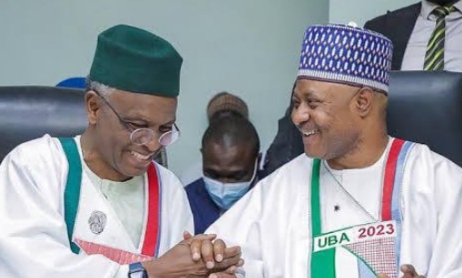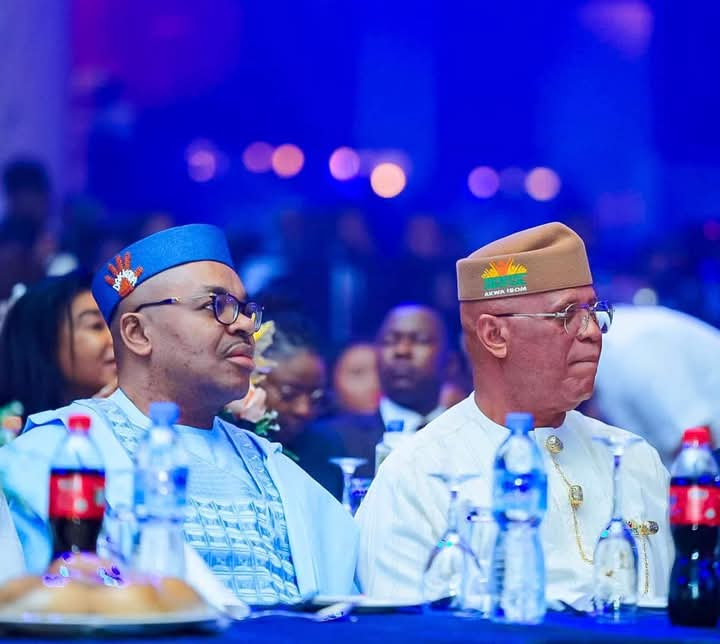By Shamsuddeen Suleiman Malami
Introduction: The Man, His State, and the Promises Made
In the landscape of Nigerian politics, few figures command attention like Malam Nasir El-Rufai. A man of intellect and strategic acumen, he built a reputation as a reformer, earning national recognition through various political appointments and governance roles. His tenure as Minister of the Federal Capital Territory (FCT) cemented his image as a no-nonsense administrator, one unafraid of bold decisions.
When he assumed office as Governor of Kaduna State in 2015, El-Rufai positioned himself as a visionary leader determined to reshape the state. With promises of infrastructural renewal, economic growth, and educational transformation, he projected an image of competence and efficiency. His administration made sweeping reforms, particularly in education—claiming to fix a broken system through mass teacher recruitment, school renovations, and increased budgetary allocations.
But did these policies truly uplift Kaduna’s education sector, or did they mask deeper structural failures? Were the promises fulfilled, or were they merely strategic political maneuvers?
This investigation peels back the layers of El-Rufai’s education policies, examining the reality behind the figures, contracts, and political rhetoric. As his successor, Uba Sani, takes the reins, he inherits not just a system in transition, but a legacy filled with both ambitious reforms and unresolved burdens.
Teacher Recruitment and Mass Dismissals: Reform or Disruption?
One of the most defining and controversial moments of El-Rufai’s education reform was the mass dismissal of over 22,000 primary school teachers in 2017. Branded as “unqualified” after competency tests, the mass sack was justified by the administration as a necessary step to improve educational quality. However, the move sparked outrage, with critics arguing that it was a politically motivated purge rather than a genuine reform.
In their place, the government recruited over 20,000 new teachers, claiming they met higher standards and would drive educational progress. But did this policy achieve its intended goal, or did it leave Kaduna’s education system in deeper crisis?
A First in Nigeria’s History?
While some states in Nigeria have dismissed teachers over incompetence, no other state has carried out mass sackings at the scale of Kaduna’s under El-Rufai. A comparison with similar actions in other states reveals a stark contrast:
Edo State (2014) – Under Governor Adams Oshiomhole, competency tests were conducted, but most failing teachers were retrained instead of dismissed.
Ekiti State (2015) – Governor Ayo Fayose dismissed only 500 teachers for certificate fraud, rather than mass incompetency.
Bauchi State (2017) – A competency test was held, but the government opted for retraining rather than mass firing.
Kano State (2016) – Governor Ganduje dismissed some teachers but reassigned others to non-teaching roles instead of outright termination.
Unlike these states, Kaduna dismissed its teachers in one sweep, without considering alternative solutions. This decision was not only disruptive but also politically costly, leading to long-term consequences that continue to haunt the state.
The Fallout: A System in Crisis
While the government promised that the new teachers would improve education quality, investigations on the ground revealed deep flaws in implementation:
1. Delayed Deployment – After recruitment, many new teachers were not deployed immediately, leaving thousands of classrooms empty and disrupting learning for months.
2. Quality Concerns – Some dismissed teachers had decades of experience, while many new recruits lacked the practical teaching skills needed for effective education. Interviews with parents and students revealed that in some areas, learning conditions worsened.
3. Salary Delays & Frustration – Many new recruits faced months without pay, forcing some to quit or find alternative jobs.
4. Security Concerns in Rural Areas – In places like Giwa, Birnin Gwari, and Kajuru, where insecurity is rampant, many new teachers refused to report to their assigned schools. As a result, somee communities had to hire local volunteers to fill the gap left by dismissed teachers.
A resident from Giwa LGA lamented:
> “We waited for new teachers, but none came. Our children sit in classrooms without anyone to teach them. In the end, we had to employ local graduates to teach them.”
Despite these issues, El-Rufai defended his decision, insisting that quality education required competent teachers. In 2017, he stated:
> “We will recruit as many qualified teachers as we can find. We will not keep unqualified teachers on our payroll.” – Premium Times, 2017
But the reality on the ground showed a different picture—where classrooms remained empty, students struggled, and the education sector suffered a shock from which it has yet to recover.
Key Takeaway: Reform or Political Gamble?
While the idea of raising teaching standards was laudable, El-Rufai’s approach was abrupt, poorly managed, and left more problems than solutions. The teacher crisis was not just about competency—it was about political power, budget cuts, and a rushed reform that ignored long-term consequences.
His successor, Governor Uba Sani, now faces the burden of addressing these gaps. With thousands of schools still lacking teachers, the legacy of El-Rufai’s mass dismissals lingers, raising the question: Was this truly an education reform, or just another politically motivated gamble?
Budgetary Allocations and School Renovations: Where Did the Money Go?
Throughout his eight-year tenure, Nasir El-Rufai consistently allocated a significant portion of Kaduna State’s budget to education, branding it as his administration’s flagship sector. By 2023, the total spending on education had reportedly reached ₦367.76 billion, a staggering sum meant to overhaul infrastructure, recruit teachers, and improve learning conditions.
A substantial portion of this budget—₦60 billion—was earmarked for the renovation of 4,250 schools across the state. The plan, first announced in 2017, aimed to replace dilapidated classrooms, provide furniture, and upgrade sanitation facilities. However, by the time El-Rufai left office in 2023, field investigations revealed a stark contrast between official reports and actual project execution.
The Reality on the Ground
Investigations across Giwa, Makarfi, and Zaria LGAs uncovered multiple irregularities:
Abandoned Projects: Schools listed as “renovated” in government records were, in many cases, only partially completed or entirely untouched. For example, in Giwa LGA, a primary school that was supposed to be refurbished in 2021 remained a crumbling structure with students still learning under trees.
Substandard Construction: Even where renovations were completed, they often involved poor-quality materials. A school in Makarfi LGA, reportedly renovated in 2020, already had cracked walls and a leaking roof within two years.
Urban vs. Rural Disparity: While urban centers like Kaduna North saw the construction of multi-story school buildings, rural communities in Giwa, Birnin Gwari, and Kajuru were left with overcrowded and poorly maintained schools.
A local teacher in Zaria LGA put it bluntly:
> “We were told that our school was renovated in 2022, but what did we get? A fresh coat of paint on a building with no desks, no doors, and no teachers.”
Comparisons With Other States
Kaduna’s school renovation spending appears even more questionable when compared to similar projects in Lagos and Ekiti States.
In Lagos State, under Governor Babajide Sanwo-Olu, the EKOEXCEL program spent ₦11.5 billion between 2019 and 2022 to renovate 1,036 schools—an average of ₦11.1 million per school.
In Ekiti State, Governor Kayode Fayemi allocated ₦16 billion for education infrastructure between 2018 and 2022, renovating 600 schools—averaging ₦26.6 million per school.
In contrast, Kaduna reportedly spent ₦60 billion for 4,250 schools, averaging ₦14.1 million per school, but with far worse outcomes.
Despite Kaduna spending more than Lagos and Ekiti in total, many schools remained in disrepair, raising concerns about mismanagement, inflated contracts, and political optics.
Who Benefited?
A deeper dive into the contracts awarded for school renovations in Kaduna suggests a troubling pattern:
Several contracts were awarded to firms with no proven track record in school construction.
Some companies received multiple contracts at inflated rates.
In several cases, projects remained incomplete despite full payments being made.
For instance, in 2020, the Kaduna State Government awarded a billions of contract to renovate over 200 schools, yet by 2023, many of these schools were still in disrepair. Similar cases occurred in 2021 and 2022, where contracts worth billions were issued, but results on the ground failed to match expectations.
A Political Strategy Rather Than Genuine Reform?
The pattern of prioritizing urban schools for high-profile projects while neglecting rural areas suggests that these initiatives were driven more by political optics than by a genuine commitment to educational reform.
A school administrator in Makarfi LGA described the situation:
> “The government builds fancy schools in the city to show on TV, but here in the villages, we’re left with half-completed classrooms and no chairs for students.”
The selective execution of projects, combined with excessive spending and incomplete renovations, raises serious accountability questions.
While El-Rufai’s administration touted education as a major success, the reality suggests systemic failures, financial mismanagement, and misplaced priorities. The ₦60 billion renovation plan remains one of the most questionable legacies of his tenure, with thousands of children still learning in inadequate conditions despite the enormous budgetary allocations.
As Governor Uba Sani takes over, he faces a critical decision:
Will he audit these projects and hold contractors accountable?
Or will he ignore the discrepancies and continue the cycle of unkept promises?
… to be continued



